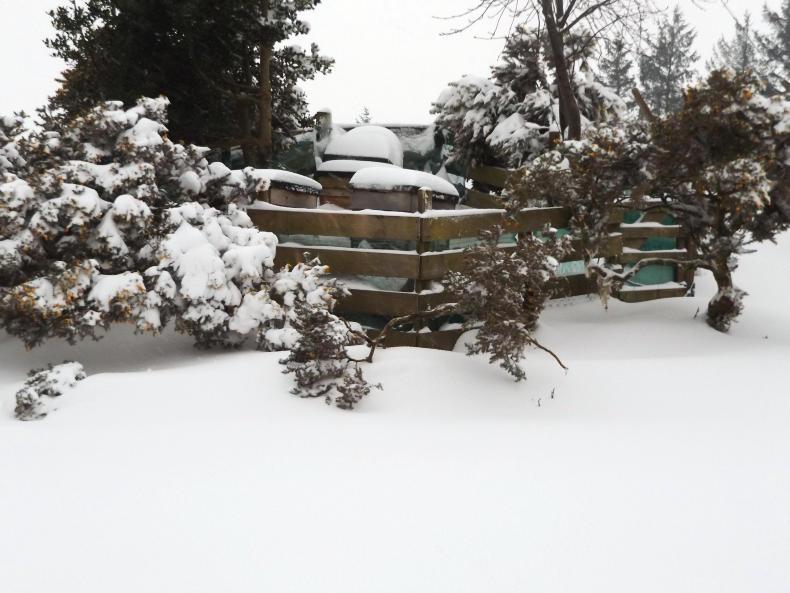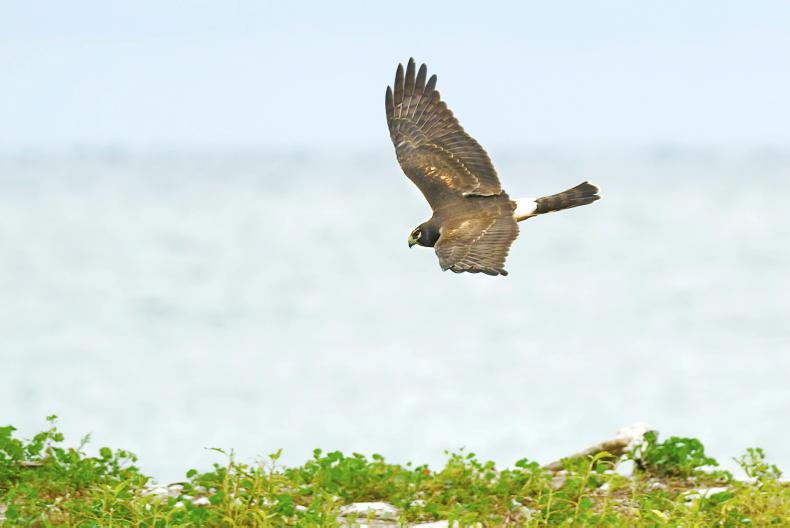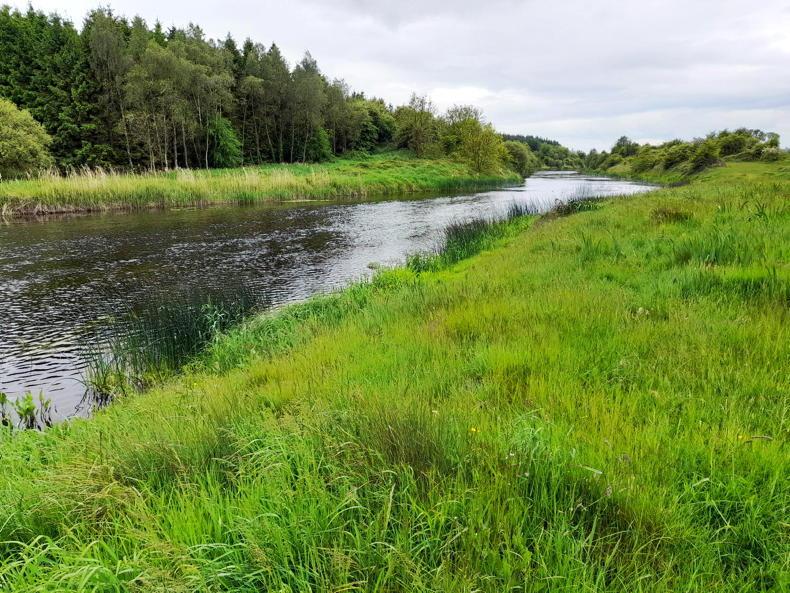Everything was going very well, beekeeping wise, until we got the snow. Who wants to be reminded of it, since it brought nothing but hardship for many. Anyway, before the snow bees were out foraging for about an hour or so during the warm part of the day.
The crocus and snowdrops were in full bloom. One could see bees busily going about their business, collecting much-needed pollen. Their furry coats and bodies looked good and healthy. It’s a bit like looking at any stock, one can tell if they are in good condition.
The real test for the health status of bees in their hives will come when they are inspected, as a unit, during the first openings in April. Beekeepers will soon find out which colonies survived and are strong enough to carry on into the season.
One advantage of snow is that it acts as a temporary insulator to the hives. One can observe heat loss from the hive roof by watching a mound of snow melting from the centre of the roof outwards. Bees inside the hive are clustered together to retain heat. The rising heat from their 17°C cluster is sufficient to dissolve snow sitting on the hive roof.
Conference
On 9-10 February, the Native Irish Honeybee Society (NIHBS) held its annual conference in Athlone. This society has gone from strength to strength, drawing a large attendance from across the country. There were several speakers, providing a range of topics, from nuclei making, pollination, bees and the environment, as well as research results on the status of the native black bee. The guest speaker was Dr Ralph Büchler from the Bee Institute in Kirchain, Germany. His lectures were very engaging.
Research on the status of the native black bees has shown that the Irish population is pure. The protection of this bee is of utmost importance, since they are very suited to the Irish climate, performing well against the odds. The NIHBS is engaged in the promoting and preservation of this bee.
Feeding bees
Like anyone involved with animals, the provision of food for both current use and storage will always be foremost in their planning. For beekeepers this is a very different story. We literally live on a wing and a prayer, or should I say the bees do. The beekeeper and the bee are dependent on the generosity of the community, such as farmers, forestry, private gardens, waste ground, local authorities, etc, to provide the forage required by bees.
The only way this can be done is by leaving as much natural growth as possible on hedges, wild areas and so on. The bees will find the blooms and store any excess for winter months.
The crocus and snowdrops which slumbered in bloom under the March snow-cap are only memories now. The willow take their place, producing yellow catkins laden with pollen which the bees eagerly collect. Bees utilise this highly valuable protein food for the production of bee milk, which will be used to feed the young larval bee. The more varied the protein supply, the healthier the bee colony will be.
While my emphasis here is on honeybees, I am conscious of the large number of solitary bees, not forgetting the social bumblebee. Society is now more aware of our interdependence on all aspects of nature. Let’s continue to help that which helps us. CL
Read more:
Wild flowers to the rescue
Beekeeping: the honey bee in winter
Everything was going very well, beekeeping wise, until we got the snow. Who wants to be reminded of it, since it brought nothing but hardship for many. Anyway, before the snow bees were out foraging for about an hour or so during the warm part of the day.
The crocus and snowdrops were in full bloom. One could see bees busily going about their business, collecting much-needed pollen. Their furry coats and bodies looked good and healthy. It’s a bit like looking at any stock, one can tell if they are in good condition.
The real test for the health status of bees in their hives will come when they are inspected, as a unit, during the first openings in April. Beekeepers will soon find out which colonies survived and are strong enough to carry on into the season.
One advantage of snow is that it acts as a temporary insulator to the hives. One can observe heat loss from the hive roof by watching a mound of snow melting from the centre of the roof outwards. Bees inside the hive are clustered together to retain heat. The rising heat from their 17°C cluster is sufficient to dissolve snow sitting on the hive roof.
Conference
On 9-10 February, the Native Irish Honeybee Society (NIHBS) held its annual conference in Athlone. This society has gone from strength to strength, drawing a large attendance from across the country. There were several speakers, providing a range of topics, from nuclei making, pollination, bees and the environment, as well as research results on the status of the native black bee. The guest speaker was Dr Ralph Büchler from the Bee Institute in Kirchain, Germany. His lectures were very engaging.
Research on the status of the native black bees has shown that the Irish population is pure. The protection of this bee is of utmost importance, since they are very suited to the Irish climate, performing well against the odds. The NIHBS is engaged in the promoting and preservation of this bee.
Feeding bees
Like anyone involved with animals, the provision of food for both current use and storage will always be foremost in their planning. For beekeepers this is a very different story. We literally live on a wing and a prayer, or should I say the bees do. The beekeeper and the bee are dependent on the generosity of the community, such as farmers, forestry, private gardens, waste ground, local authorities, etc, to provide the forage required by bees.
The only way this can be done is by leaving as much natural growth as possible on hedges, wild areas and so on. The bees will find the blooms and store any excess for winter months.
The crocus and snowdrops which slumbered in bloom under the March snow-cap are only memories now. The willow take their place, producing yellow catkins laden with pollen which the bees eagerly collect. Bees utilise this highly valuable protein food for the production of bee milk, which will be used to feed the young larval bee. The more varied the protein supply, the healthier the bee colony will be.
While my emphasis here is on honeybees, I am conscious of the large number of solitary bees, not forgetting the social bumblebee. Society is now more aware of our interdependence on all aspects of nature. Let’s continue to help that which helps us. CL
Read more:
Wild flowers to the rescue
Beekeeping: the honey bee in winter









SHARING OPTIONS